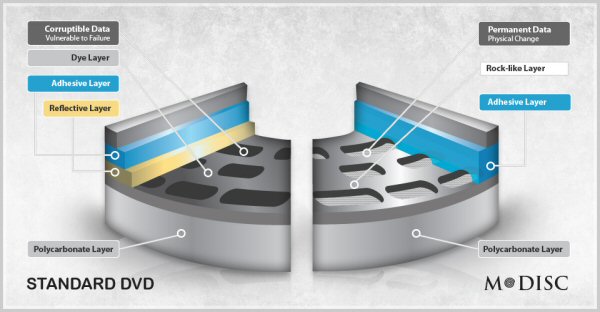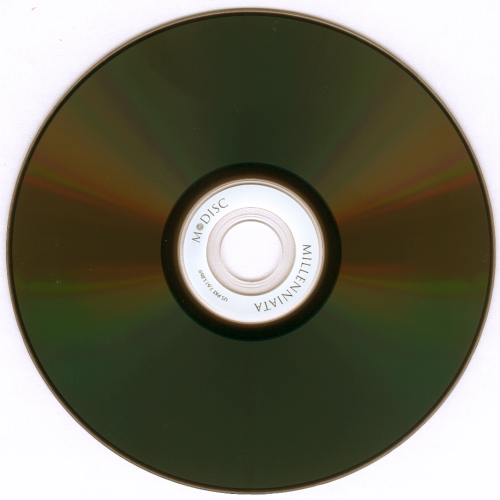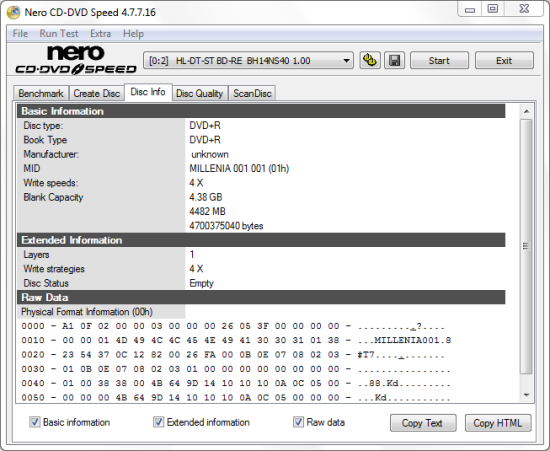Current DVD technology uses organic dyes and low laser power to make marks on the data layer of a standard recordable DVD. Over time, these marks become unreadable because organic dyes degrade when exposed to minimal levels of light, heat, and humidity. This means all the data you thought was safely stored could be lost because the discs you used have an average lifespan of only about 3 to 5 years.
The materials and the write process used for the M-DISC were chosen with stability and longevity as the primary goals. Millenniata utilizes chemically stable and heat-resistant materials that are not used in any other DVD or optical disc. These materials cannot be overwritten, erased or corrupted by natural processes. The normal laser energy employed to write DVDs or CDs cannot successfully write to the inorganic and synthetic materials used in the M-DISC.

Data is stored on the M-DISC by physically altering the recording layer and creating permanent voids or holes. DVDs and other optical discs use organic dyes that break down over time, resulting in corrupt and unreadable data. These organic dyes are highly susceptible to temperature, humidity and even sunlight, starting to fade and decay the moment you record data.
Millenniata’s recording process utilizes higher temperatures than any ordinary optical disc. The inorganic data layer materials undergo a physical change during the write process. When the data layer is irradiated by a focused laser, the intense heat generated causes the innermost layers to melt and to move away from the laser spot, creating a hole or pit in the data layer.

These physical pits have two main advantages over dye and phase-change-based optical media; the permanent physical movement of the material, and the permanent optical contrast between light and dark spots. Movement of the material actually enhances the edge of the mark. The nanometer scale location of the edges is critical to the retention of data, with the enhanced edges further building-in longevity. The other advantage is the excellent, permanent optical contrast that comes from making a physical mark. The difference in optical quality between the pit, where there is no material, and the areas adjacent to the pit, where the material remains, provides a definite advantage in retention of data and in ease of reading the disc long into the future. Essentially, pits are better and allows for readable data even after hundreds of years.
While the same size and thickness as a standard DVD, Millenniata's M-DISC looks nothing like the other optical formats on the market today. For one, the top of the disc is brown and the bottom is silver. Also, with there being no reflective or dye layers, you can see right through the disc when placed in front of a bright light.
Here's a photo showing the Millenniata M-DISC next to other optical formats. From the upper left and moving clockwise you have a CD-R, BD-R, M-DISC and DVD-R.
Once written, the M-DISC can be read or played on any DVD drive that supports the DVD+R/RW format. Most DVD drives that were manufactured after 2005 and almost all Blu-ray or BD drives support this format.





